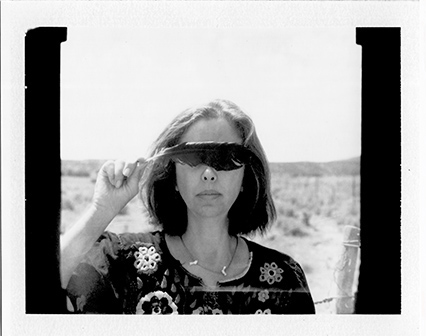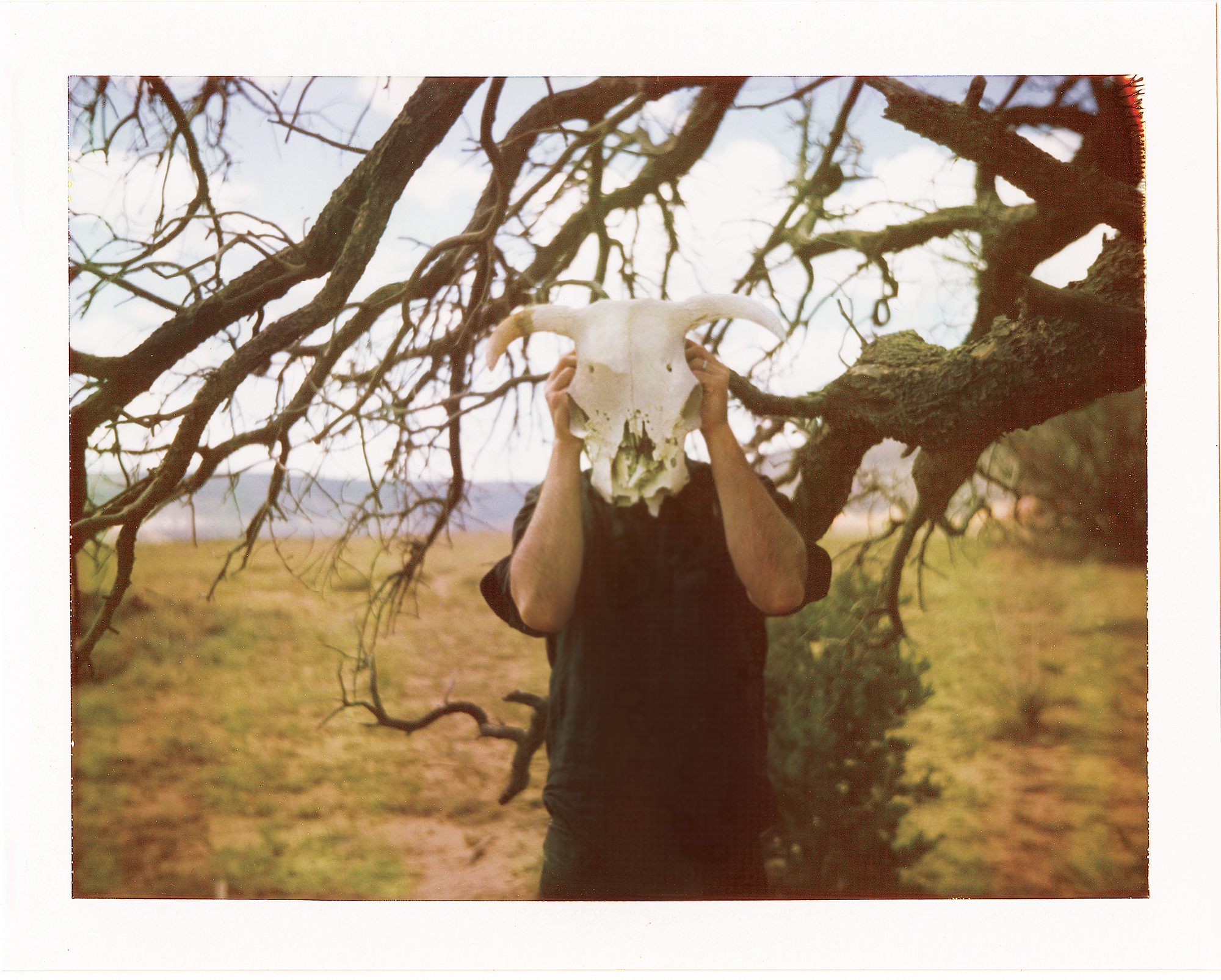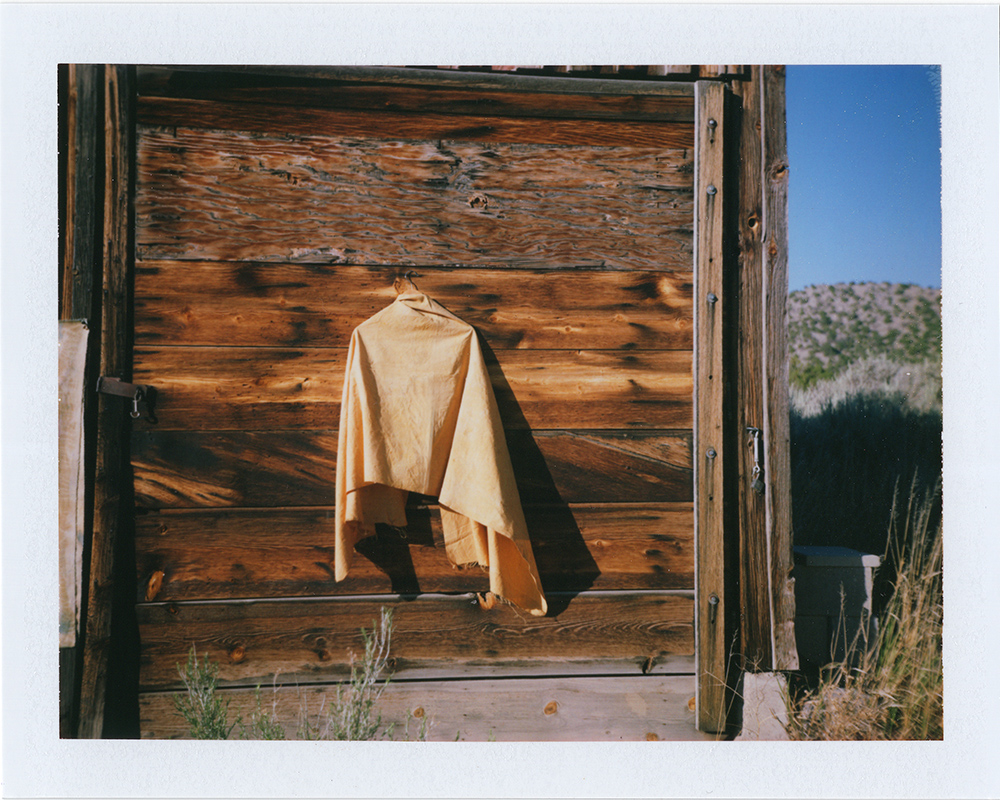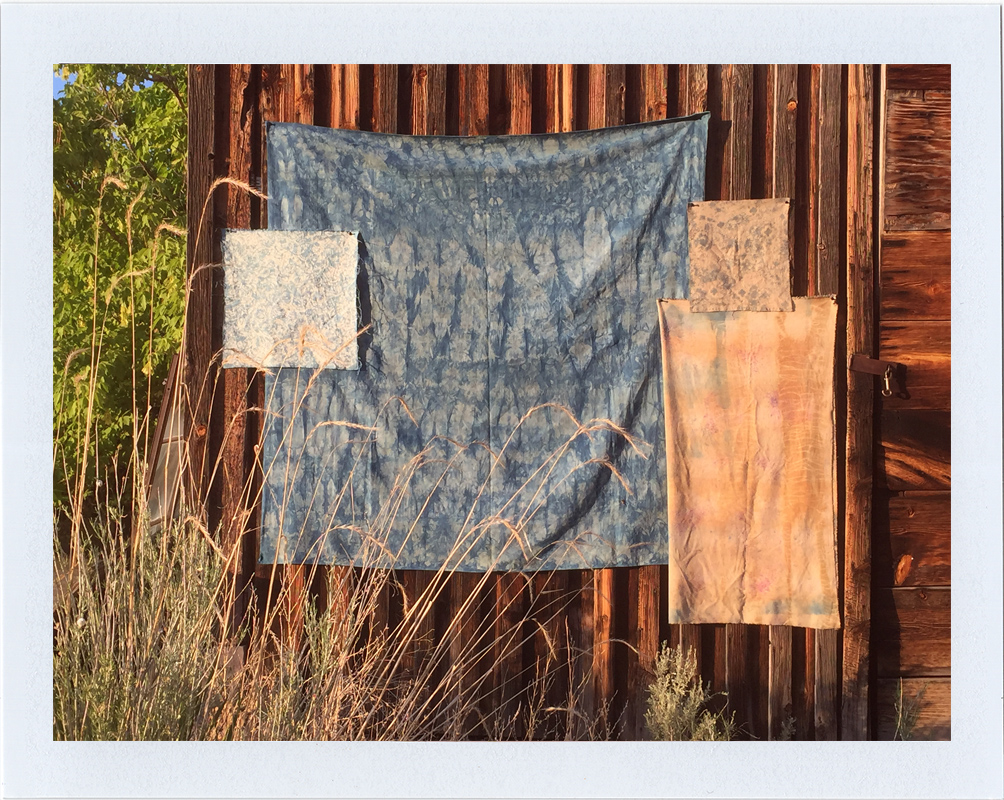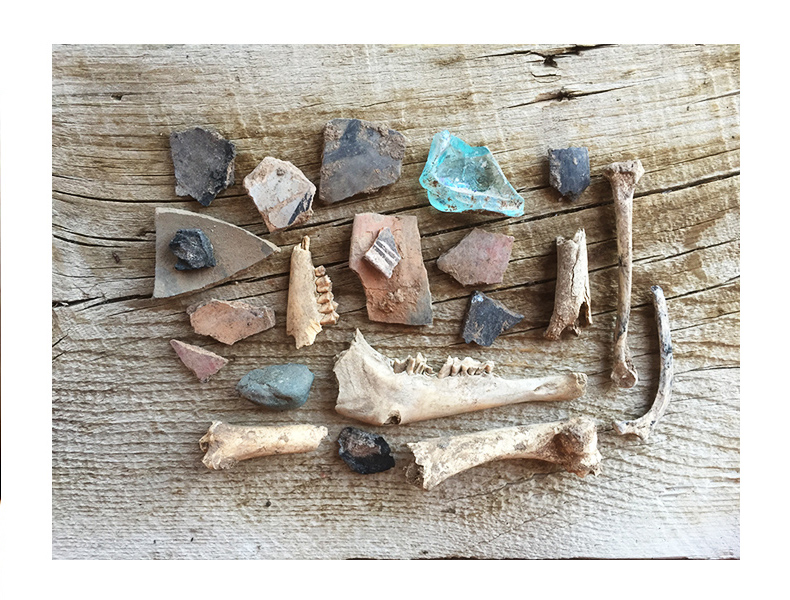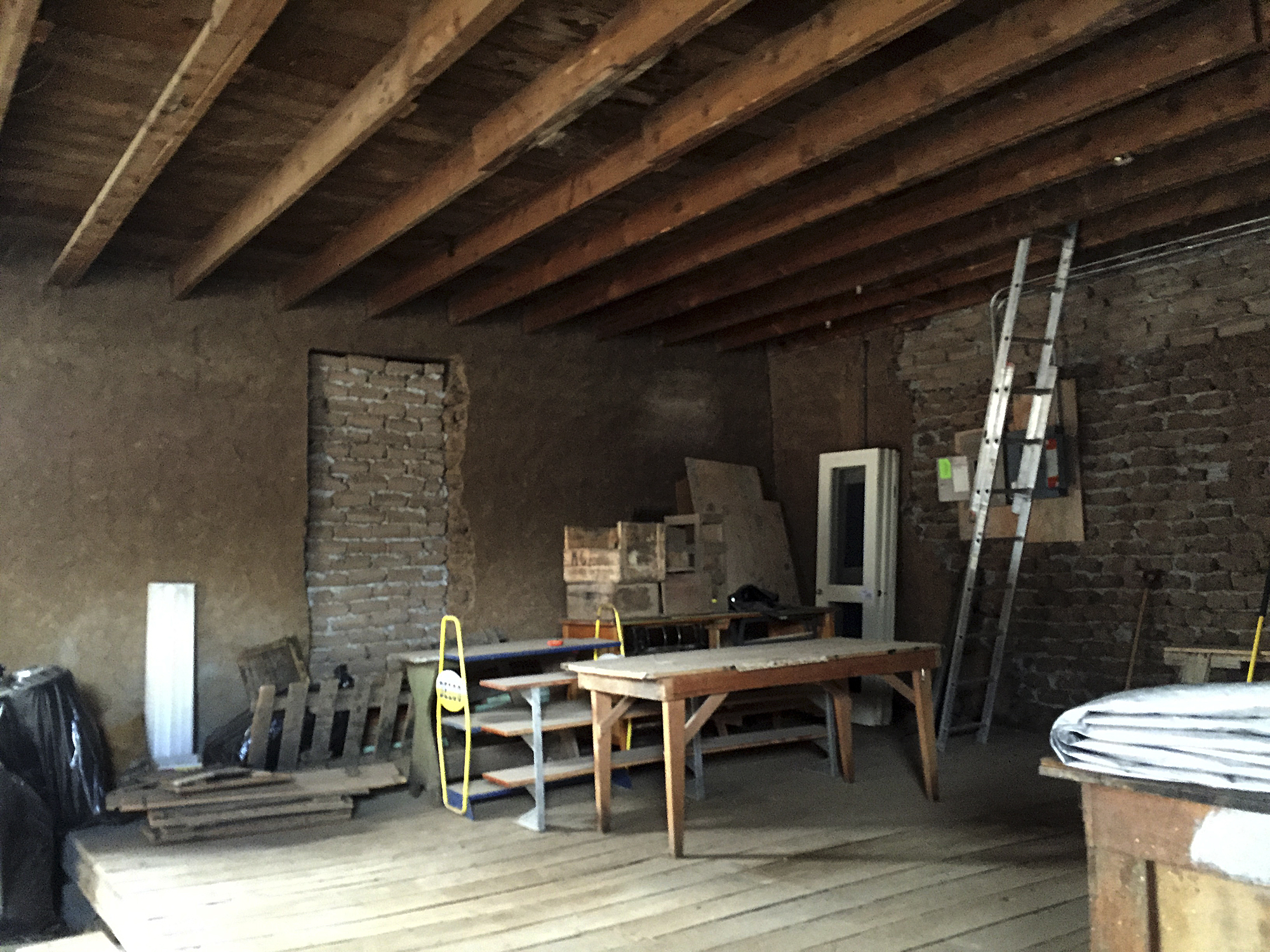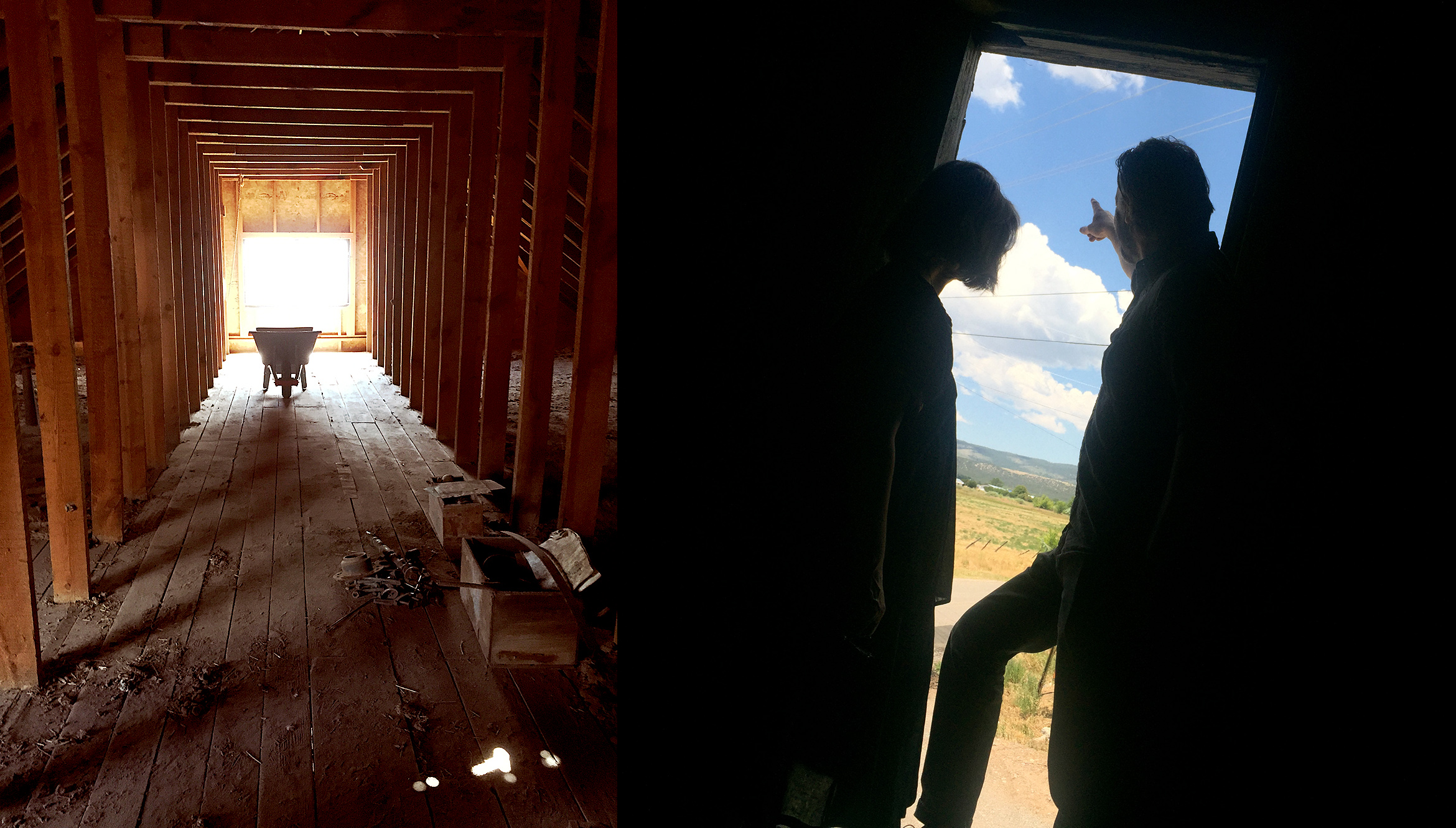Gina Binkley & David McClister, Photographers & Artists
Gina Binkley and David McClister took these Polaroids of one another. They also took all the other great photos that accompany this story.
Nashville is a city of invisible talent, home to thousands of absurdly gifted behind-the-scenes players who provide the backbone to the art that’s produced here.
Much like in LA, where an Oscar-winning cinematographer might be sitting next to you in the waiting room at the dentist’s office, in Nashville the guy behind you in line at the Turnip Truck might be the producer responsible for the sound of your favorite record.
Or its look.
For example, I’d known Gina Binkley and David McClister for years before I found out that they were the ones behind the album packaging for the cult Ryan Adams album, Heartbreaker.
But that shouldn’t have surprised me. Gina and David are two of the most respected and prolific visual artists I know, in Nashville or anywhere.
Married since 1999, both are longtime fixtures on Nashville’s creative scene.
Professionally, Gina works in both graphic design and photography. She got her start in design in the ‘80s, in Nashville’s advertising scene. Since then, the music world has proven to be her sweet spot, and she’s got a 1999 Grammy nomination for album design to prove it (she lost to Madonna’s Ray of Light, but in the process did gain the distinction of being the only Nashville artist to ever be pitted against Madge).
And, in a perfect example of the covert style of work I described above, it was Gina who designed the onscreen logo for the opening credits of the TV show Nashville – something I first heard while reporting this story.
Over the last few years, much to my delight, Gina’s been retreating to the beautiful wooden shed workspace in the couple’s West Meade backyard to create some truly extraordinary hand-dyed textiles, which she makes using naturally derived plant dyes that she simmers in big metal vats. (I posted a photo of the indigo-dyed raw silk throw she made me on my Instagram account last year; a few weeks later, a print-out of my shot was pinned on designer Billy Reid’s inspiration board.)
During our chats for this story, David reminded me that he was a creative writing major in college – something I should have already known, as his more conceptual video and photo shoots are always peppered with references to literature, art and history.
As a director and photographer, David’s visual style is distinctive in its dichotomies. His images are structured and loose, modern and timeless, delicate and bold – juxtapositions that are obvious in his portraiture for Rolling Stone, Garden & Gun and a slew of other big-time publications. His client list reads like a who’s-who of Americana and country music, from Jason Isbell, My Morning Jacket and Alabama Shakes to Merle Haggard, Kris Kristofferson, and Loretta Lynn.
David’s love of great music helped launch the secondhand side business that he and Gina share. The two troll thrift stores and estate sales coast to coast for vintage finds: David’s the vinyl guy, while Gina looks for unique textiles and clothing. They host pop-ups from time to time around Nashville.
I’ve known Gina and David since 2007, when David hired me to design the period looks for LeAnn Rimes’ “Nothing Better to Do” video. It’s a country music video shot in a way that’s stylish and cool — to use two adjectives that, frankly, are rarely called upon to describe this visual genre.
The LeAnn gig is my favorite job from my styling days. David and I talk about it more in the interview, so suffice it enough to say here that getting to do it was a game-changer.
After our successful collaboration on that video, David and I ended up working together frequently. There weren’t many other directors or photographers at that time who appreciated my approach, which incorporated lots of vintage clothing and wasn’t exactly a conventional fit for a genre where a leather jacket still reads as edgy. But David got where I was coming from.
Over the years I’ve become good friends with both Gina and David. Like a lot of busy people in my life, I don’t see them nearly enough for my liking; running into one or both of them once a month at the flea market doesn’t cut it. (Without fail and rarely with premeditation, we bump into each other at the flea, in the same area of the same building, every. single. time. It’d be spooky if it weren’t so cool.)
When we do find time to get together, I always leave them motivated to do better work and promising myself to work harder at my own creative endeavors. I am inspired by the thoughtfulness and dedication Gina and David apply to all of their work, regardless of whether it’s a paying gig or personal project. They are true artists.
This post is a bit of a departure from other TCR entries in two ways. First of all, it’s the first entry in an ongoing occasional series about creative couples called Times Two. It also deviates from the TCR norm in that the interview was conducted long-distance: I was in Nashville, while Gina and David were on a summer sojourn in New Mexico, where they recently purchased a 100-year-old garage in a small town called El Rito (population 1,200). The adobe building was once a tire shop, but they’re in the process of renovating it to use as an artist retreat — for themselves of course, but also for friends and guests they’ll welcome via AirBnB. (I’ll share the listing later this year.)
Also, instead of having one of my amazing photographer partners shoot them here in Nashville, Gina and David photographed each other in their new southwestern habitat. The photos also include scenes from El Rito as well as shots of the new building and Gina’s textiles, among others.
As far as the interview, I was anxious to chat about their new creative space and their latest projects. But I also wanted to talk about how the work they do with the music industry and in Nashville has changed over the years in response to digital culture. And, in the spirit of Times Two, I was also keen to find out the times that their work has overlapped and how they go about collaborating. What I discovered is that their support of each other’s art is a subtle, but constant presence. They are a team, in work and in life.
TCR: I haven’t seen photos so I’m trying to get a visual of where you are right now. Tell me about El Rito.
GINA: We’re 50 miles north of Santa Fe and 50 miles from Taos. Georgia O’Keeffe’s home is about 15 miles away. So is Ojo Caliente, which is a spa and mineral bath that has been here since the 1800s. So we’re kind of in the middle of everything, even though there’s nothing here. It’s the quietest place I think I’ve ever spent time in.
Right now, the wind is blowing. It’s probably about 80 degrees.
DAVID: No humidity.
GINA: It’s perfect. There’s something about the air. It smells good here — especially in the winter, when everyone’s burning a fire, you can smell that piñon pine. The air kinda smells sweet, like incense.
It rained here on Tuesday night; the windows were open and it smelled like sage. All these scents – it’s almost like aromatherapy.
TCR: How did you guys find the garage you’re fixing up?
DAVID: We took a wrong turn.
TCR: [LAUGHS] Explain.
DAVID: We came out here for Christmas last year and kind of split the week, the first half at Taos and the second half at Abiquiu. It’s beautiful up here in the mountains. Every day it’s covered in snow, everywhere. And we’d go out and explore with our cameras and go a different direction every day and see what was around.
GINA: There was nothing going on. It was really quiet. We spent Christmas day at Taos Pueblo watching the deer dance. It was amazing.
And on Christmas Eve we went to mass in Taos, at the San Francisco de Asis Mission Church. It’s the church that Ansel Adams shot and Georgia O’Keeffe painted. And that was amazing.
DAVID: We weren’t even talking about buying a place out here. We stumbled into little El Rito and came across this shop and fell in love with it.
I stopped because Martin’s, the old grocery store next door, looks like a Walker Evans photo. So I had to get out and take a picture of it. And then we noticed these properties were for sale. We called and the owners met us the next day, the day after Christmas. And we fell in love with it. It is so inspiring.
TCR: So you felt like you kind of found a spiritual home out there?
GINA: I don’t know, but I’ve always loved this landscape and I think David does as well. It’s something different. I mean, the sky is amazing.
DAVID (to Gina): And you were always drawn to Georgia O’Keeffe’s work.
GINA: Her work is wonderful, don’t get me wrong. But it’s more about her, her principles, her passion and just the way she lived. To me she had this amazing strength. She was very independent. Even though she was married to Alfred Stieglitz she chose this other path for herself and somehow made that work for both of them and their relationship. She pursued her own life.
She drove out here and said all of a sudden she just knew where she belonged. I mean she was driving across country by herself in the ‘30s. I just loved her spunk. I loved her mind and her willingness to be so determined and focused.
TCR: Between driving out there and around the southeast on buying trips, it seems to me that you guys have been traveling more lately than in the past, at least since I’ve known you. Was that a conscious decision you made?
DAVID: I’ve been traveling a lot for work; I’m consistently anyway. But I love being on the road. I love hotels. I love exploring new cultures and meeting new people. It’s just so creatively stimulating to get out of your comfort zone and to experience a new place and meet new people. It inspires you in your work to try new things.
GINA: And to get off the computer. I mean as much as it is a creative tool, if you’re in the commercial world you’re locked down to it. And it’s hard for me to just sit for eight hours a day. I think it’s counterintuitive to what creative people are.
Early on, I didn’t use computers for work. The first five or six years of my career at advertising agencies were doing lay outs that were strictly on vellum. They were drawn. Type was set at a type-setter. I loved it. There was this sense of still working with your hands.
I’ve also been shooting since I was 18 years old. About 20 years ago I was into building these assembled pieces, collages. My photography became more based on still life.
Then I saw The September Issue and it clicked. Like, you can do this. Not necessarily on that level, but the film inspired me. I was able to tell Grace Coddington that when she visited the Frist Center a few years ago. The film allowed me to embrace shooting portraiture and do more conceptual type work with people. What I’m trying to do now is conceptual work that combines assemblage with people.
But on the other end of the spectrum, I’ve been shooting a lot of Polaroids. Those are two different points of view and I love both of ‘em. So I don’t know.
TCR: But the beauty is that you don’t have to choose.
GINA: I look back at some of the American masters. They obviously had a style and their work was recognizable but they didn’t just do the same thing over and over. It seems like our idea of branding has affected everything. Now you have to have an artist statement. You have to explain why you do things the way you do and what you’re trying to say or accomplish with your work.
DAVID: The work should speak for itself. It either provokes a reaction, an emotion, or it doesn’t. I don’t think it needs any kind of explanation or any context behind it. It is what it is.
TCR: You guys work a lot with the music industry. How have those jobs changed over the years from when you started?
DAVID: They want more for less. Usually when you do a shoot for a record company you’re doing it for the support of an album or a release. And what they’re trying to do now is get enough content (from that shoot) for the life of the album – we’re talking about a year and a half, two years. So they’re really pushing you to get as much as you can. And usually there’s only one day.
But I don’t look at it as pressure. Because in almost every case, once I get involved in a shoot I’m so excited that I don’t want to stop. I’m having so much fun doing what I’m doing that I’m anxious to do the next thing, the next idea. I look at it as a big canvas.
TCR: David, the first time we worked together was on “Nothing Better to Do.” That was a pretty big project - a two-day shoot with multiple sets and a dance sequence with Busby Berkley-esque choreography. We shot at the old Tennessee State Prison.
DAVID: That was so much fun. I think those were 18-hour days. And LeAnn and Rhet Bear, the DP, and I all wanted to keep going. We still had more ideas that we wanted to try to cram in. And my producer had to cut us off.
TCR: I remember the last shot we did started well after midnight, in (MLK executioner) James Earl Ray's cell, right?
DAVID: Not in that specific chamber, but he was in the death row house that we shot in.
TCR: That experience set the bar for me in terms of the caliber of projects I wanted to seek out as a stylist from thereon out. Your creative process was so distinctively different from the other directors I was working with. That job was such a rewarding experience.
DAVID: It’s such a credit to LeAnn. She’s great to work with because she’s always trying to push herself out of her own comfort zone. And there certainly were very few artists at the point when we did that video that were willing to do that. I think it’s still true today.
In general, video budgets across the board are not like that anymore. That was a different time. That was before the economy collapsed and before budgets really got slashed. Budgets for videos still have not come back, nor have they for photo shoots. Videos are really challenging now, especially if you want to try to do something that conceptual because they are about half what they were before. But the expectations are still the same in many ways. And that’s the same for photo shoots.
GINA: I don’t even know if it’s about the economy collapsing. It’s more about all the content they have to provide. Now you have streaming and you have blogs and you have webisodes and social media. There are all these other needs.
TCR: Let’s switch gears for a minute. You guys got married almost 17 years ago. Over the years, have you found ways to work together, as a couple?
GINA: We definitely support each other, in recommending each other for jobs. But usually whenever we’re working together, David goes and does his thing with the photos. And then they come to me, and I do my thing with the design. I’ll ask his opinion on the covers or on layouts and see what he thinks. But I’m doing that regardless of whether I’m working with his photographs or not. I always get his input on things because 99.9 percent of the time he’s right. His instincts are very good.
It’s fun going out and working on jobs together. We’ve done a couple videos together where he’s directed and I have done props and art direction and things like that. And he assists me on shoots sometimes because my budgets are often limited. But as far as being on set working beside him, we haven’t ever done that.
DAVID: When we do work together, we’re there to help. Gina has a great eye and such a strong unique vision that I love that I just kinda stand back and watch her and let her do her thing.
It’s so hard to find a unique voice as an artist. And I think Gina has truly a very unique voice as a photographer. Her viewpoint is so different from anyone else, and her style and the way she sees things. I think that’s really a beautiful thing. It’s a gift and I’m in awe of it.
TCR: One project you worked on together was Heartbreaker, which Ryan Adams recorded here with Gillian Welch and Dave Rawlings.
DAVID: Gina’s the one that brought it to the table. Ryan’s manager, Frank Callari, had hired her to design the package. I had never done anything professionally but Frank went along with me shooting it.
GINA: We’d been married a year, not even.
DAVID: That was pretty much a true collaboration. Gina was at the photo shoot and she definitely had ideas. But it was really about clicking with Ryan. It was just Ryan and I bouncing ideas back and forth for a couple of hours.
It was his idea to go to a grocery store for the photo on the back of the record. We commandeered a store near this old rundown hotel where we shot. We went in and I got up on a ladder and we just did it. [LAUGHS] Everyone in the shot worked on the album. The tour manager was the cashier. Ryan is buying d-CON rat killer. It was fun — very loose and spontaneous. There was a lot of creative energy.
GINA: It was so easy. The photos were done in a few hours. We rented one of those by-the-hour places on Dickerson Road. We went in and set up a studio and went from there. I don’t know if it’s still there.
DAVID: It’s still there. I could still show you the room.
GINA: And Ryan was staying in East Nashville at a house way off of Gallatin Road. The day of the shoot, we had to go pick him up because he doesn’t drive. We had to get him out of bed.
DAVID: Yeah, we had to call Frank to wake him up. Ryan came down and let us in the house and played us some of the songs. And I remember being blown away. It’s an amazing record.
TCR: And you’re selling some of the Heartbreaker images through Morrison Hotel Gallery.
DAVID: Yes, they represent my work. Out of everything I’ve shot, I think (those images have been) the most successful. They have my photos of Johnny Cash and Willie. Dolly. Those are iconic and they’ve sold well, too. But Heartbreaker was such a big record…
TCR: Are you able to tell when you’ve taken a good photograph?
DAVID: Well, I’m very critical of myself. I will go back and look at what I did wrong and what I could have done better. What did I miss? I analyze every shoot the same way in that I’m trying to get better each time. I think that’s the greatest thing about photography. Every time you go out it’s a new challenge. It’s gonna be different because of the circumstances. Maybe you’re working with a person you've never worked with before in an environment you’ve never been in before. Or the lighting is different than anything you’ve experienced. There’s always a new challenge. So it’s consistently fresh. And hopefully you can take what you’ve learned in the past and apply it. But you still make mistakes. Hopefully your client doesn’t see ‘em.
GINA: Well, there are also happy mistakes. Unexpected can be really good.
DAVID: I think the key is to put yourself in a position to be there when that happens — to be able to capture that expression, that moment, that accident.
GINA: You just have to think on your feet.
DAVID: The spontaneity of photography is what is so exciting.
TCR: So, are you ever coming back?
GINA: [LAUGHS] Yeah.
TCR: Do you ever think about leaving Nashville?
GINA & DAVID, together: No.
GINA: Not now. We’ve still got busy, busy lives there.
TCR: What kind of work are you doing right now?
DAVID: I’m trying to work on some documentary films about music and find some time to write some books. And I’m trying to shoot more sports. I’ve been working on a series about girl boxers, from the age of 8 to teenagers. I’ve always been interested in subcultures. I did small town wrestling all over the south. And roller derby girls and dirt track racers.
GINA: I’m doing series of portraits that are more collage imagery. That’s my focus right now – photography. But I’m also doing a lot of dying.
And we’re working on that garage. I am on my hands and knees with a putty knife scraping 100 years of oil and grease off the floor. That’s my creative venture right now.
TCR: So you’re working in oil.
GINA: Yes, I’m working in oil. [LAUGHS] I brought some clay with me and I also have a sketchbook. But what I do here is think. My mind just goes and goes and goes.
I have so many ideas that come to me here. Right now I don’t have the time to sit down and make anything. But I definitely know that this is gonna be a great place to create.
